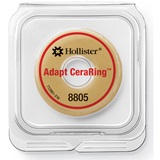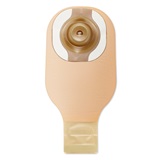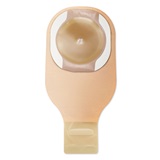Essential Facts About Your Ileostomy
It’s important to know some key facts about your digestive system and your ileostomy. Get some vital information about your ileostomy procedure.

Find out more about your ileostomy.
If you are about to have ileostomy surgery, you probably have a few questions about how your body digests foods and liquids, and how your ileostomy will be created. Below is some helpful information on the digestive system, and on what happens during and after ileostomy surgery.
Getting to know your gastrointestinal (GI) system
When you eat or drink and swallow, your GI system goes to work. First, the food or liquid enters your esophagus, then flows into your stomach. From there, the enzymes in your stomach break down the food so it becomes a liquid mix. Then it goes into your small intestine.
Your small intestine (also called the ileum) is roughly 20 feet in length. This is where most digestion happens. It’s also where all the elements of foods and liquids are absorbed – proteins, fats, carbohydrates, minerals, and vitamins. Anything that is not absorbed travels to the large intestine, either as liquid waste or stool.
The large intestine, or colon, is made up of four sections. These are called the ascending, transverse, descending, and sigmoid colon. The colon is five to six feet long in total, and absorbs water from your stool. It also stores your stool until you have a bowel movement.
What’s an ileostomy?
An ileostomy is a surgically created opening into the small intestine through the abdomen. With an ileostomy, a section of the small intestine and the colon have been removed or bypassed.
To construct an ileostomy, your surgeon brings part of the small intestine through the abdominal wall. This new opening on the abdomen is called a stoma.
Here are a few facts about ileostomies:
- When you have an ileostomy, stool is no longer eliminated through the anus. Instead, it passes through the stoma
- Remember, the colon’s main purpose is to absorb water and store stool. Your body can continue to function even without a colon.
- An ileostomy does not have a sphincter muscle, so you have no voluntary control over bowel movements. Instead, you will wear a pouch to collect the stool.
An ileostomy may be temporary or permanent, depending on the medical reason for the surgery. An alternative to a permanent ileostomy is a procedure called ileal pouch anal anastomosis, or ileal reservoir. After removal of the colon, the small intestine is used to create a reservoir pouch that is placed in the pelvis and connected to the anus. A temporary ileostomy is often needed while the reservoir heals.
Now that you know the basics about how your digestive system works and about ileostomy surgery, explore what you need to know about ostomy pouching systems.
- 8 Shares
- 184 Recommended







 Call Us
Call Us  Email Us
Email Us  Join Us!
Join Us!  Sign Up
Sign Up 